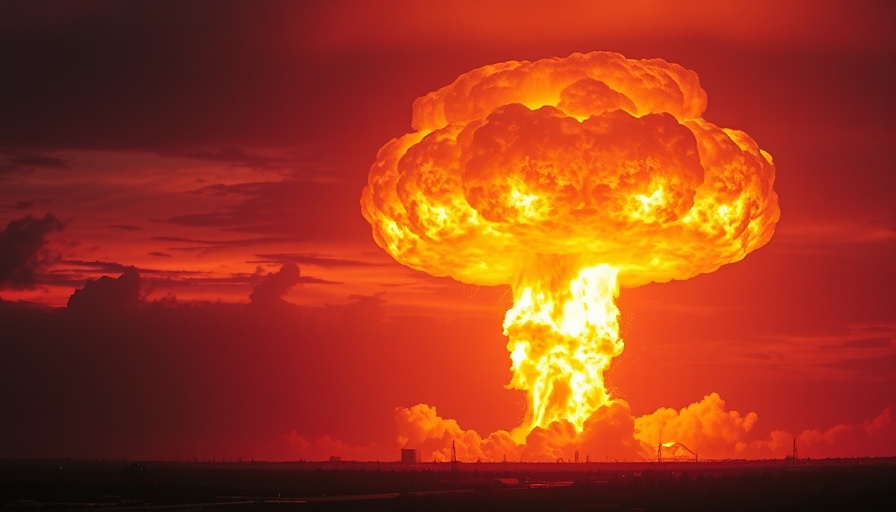
Is the Nuclear Renaissance Powered by AI a Risky Bet?
The energy landscape is evolving rapidly, and within this shift, nuclear power is re-emerging as a potential solution to growing energy demands, particularly those driven by artificial intelligence (AI). Recently, tech giants such as Amazon, Google, and Meta have publicly endorsed a vision to triple global nuclear energy capacity by 2050, recognizing the escalating requirements of AI systems. This marks a dramatic pivot from decades of public fear surrounding nuclear safety, reigniting discussions about its place in our energy portfolio.
Understanding Nuclear's Complicated Legacy
The notion of nuclear energy has historically been marred by catastrophic accidents like Chernobyl and Fukushima, both of which left indelible marks on public perception and policy. These events triggered a phase-out of atomic energy in favor of renewables across many countries. According to the International Energy Agency, the global share of nuclear power in electricity generation fell significantly—from 17.5% in 1996 to roughly 10% in 2019. The fears stemming from nuclear incidents continue to resonate today, as issues regarding radioactive waste disposal remain unresolved.
AI's Energy Demands: Driving Nuclear investment
As demand for AI technologies surges, the accompanying energy appetite poses challenges for traditional energy infrastructures. AI applications, such as training complex models, require vast amounts of electricity and are projected to consume increasing shares of national energy supplies. This presents a unique leverage point for nuclear energy, which offers reliability and scalability. The Franklin Templeton report underscores that nuclear energy’s role in meeting these demands could shape the future of U.S. business and manufacturing.
The Counterargument: Risks Associated with Nuclear Power
While the tech industry's interest in expanding nuclear energy seems promising, many experts warn against glossing over historical challenges. The potential economic and environmental impacts are significant. Recent analyses predict that building new nuclear facilities will incur high costs and long lead times. Moreover, the burgeoning interest in small modular reactors (SMRs), while representing innovation, raises new concerns about nuclear proliferation risks, waste disposal, and whether market conditions will allow these ventures to be financially viable.
Forecasting a Balanced Energy Future
Looking ahead, experts suggest that while AI's energy demands could justify a renewed interest in nuclear power, it must not come at the expense of environmental safety and public health. Significant investment into renewable energy infrastructure must accompany nuclear expansion to ensure a balanced energy strategy. Bill Gates and other tech leaders argue that nuclear could complement renewable efforts, but the reality of how quickly we can implement these technologies remains uncertain.
Engaging with the Future of Energy
Changes in energy consumption habits are inevitable as AI technology advances. Professionals in tech, healthcare, and sustainability are encouraged to stay informed and actively participate in discussions about responsible energy sourcing. Proactive engagement will be necessary to navigate the implications of nuclear power and ensure a sustainable future for energy consumption.
Understanding these dynamics is not just important for policymakers but also for individuals and communities to make informed choices about their energy futures and hold companies accountable to their environmental commitments.
Conclusion: A Call for Informed Action
As we witness a new chapter in energy consumption shaped by AI, the nuclear renaissance is both exciting and fraught with challenges. Mid to senior-level professionals in sectors like healthcare and finance should engage in conversations about these developments and advocate for a transparent approach in the return of nuclear energy. Only through informed discussions can we collectively carve a sustainable path forward.
 Add Row
Add Row  Add
Add 



 Add Row
Add Row 


 Add
Add 

Write A Comment